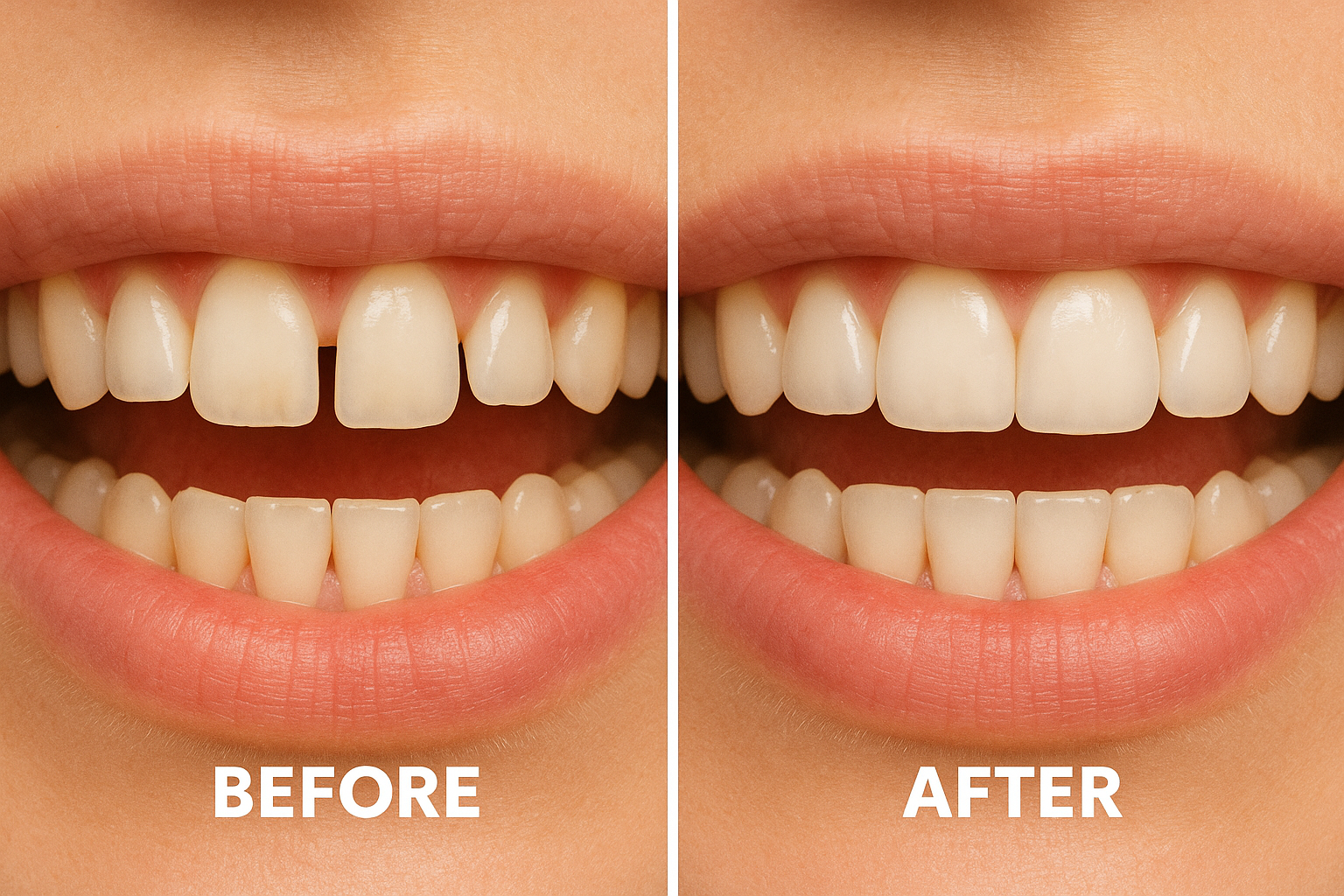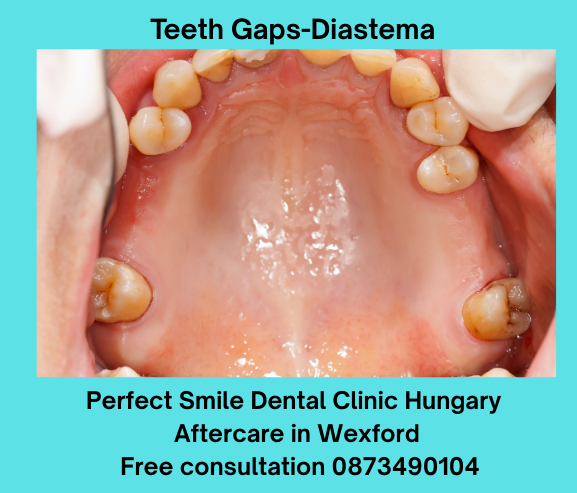Teeth Gaps
Teeth Gaps: Diastema, Causes, Concerns, and Treatment Options and which treatment is the most appropriate and affordable.
A confident smile is one of the first things people notice, but for many, teeth gaps can make them feel self-conscious. A teeth gap, also known as diastema, is a space between two or more teeth.
While some people embrace the look as part of their individuality, others see it as something they would like to correct.
Understanding why gaps form and what treatments are available can help you decide the best approach for your smile.
What Causes Teeth Gaps?
Teeth gaps are common and can develop for several reasons:
1. Genetics – If you inherit a larger jawbone and smaller teeth, spaces are more likely to appear.
2. Small or undersized teeth – When teeth do not completely fill the dental arch, visible gaps remain.
3. Habits in childhood – Thumb sucking or tongue thrusting can push front teeth apart over time.
4. Missing teeth – A tooth that never developed or one lost due to decay can leave behind a permanent gap.
5. Gum disease – Periodontal problems can weaken bone and tissue, causing teeth to shift and create spaces.
6. Large labial frenum – This is the piece of tissue connecting the upper lip to the gums. If it extends too low, it can push front teeth apart.
Are Teeth Gaps a Problem?
For many people, gaps in teeth are harmless and only a cosmetic issue. Some even consider them attractive and a signature feature of their smile.
However, in some cases, gaps can lead to or signal dental concerns:
Food may become trapped in gaps, increasing the risk of cavities or gum irritation.
Gaps caused by gum disease may indicate bone loss and the need for treatment.
Large gaps or misaligned teeth can sometimes affect speech or bite function.
Whether or not a gap is a problem depends on its cause and how much it impacts your daily life.
Treatment Options for Teeth Gaps
If you decide you would like to close or reduce your teeth gaps, there are several modern treatments available:
1. Orthodontics (Braces or Invisalign)
Moves teeth gradually into alignment.
Best option for larger or multiple gaps.
Invisible aligners are a popular choice for adults who want discreet treatment.
2. Dental Bonding
Tooth-colored resin is applied to the sides of teeth to close small spaces.
Quick and affordable, often completed in one visit.
3. Porcelain Veneers or Crowns
Thin shells placed over the front of teeth.
Ideal for closing gaps while also improving shape, size, and color.
Long-lasting cosmetic solution.
4. Dental Implants or Bridges
Used when gaps are due to missing teeth.
Implants provide a permanent replacement that looks and feels natural.
5. Frenectomy
A minor surgical procedure to remove or reduce a large frenum.
Often combined with orthodontic treatment for lasting results.
Should You Fix Teeth Gaps?
Closing those gaps is a personal choice. If the spaces don’t bother you or cause oral health issues, you may decide to leave them as they are.
Many people even find their gap gives them a distinctive, memorable smile.
On the other hand, if you feel self-conscious or if the gap is linked to dental problems, a dentist can guide you toward the best treatment option.

Final Thoughts
Teeth gaps are a common dental feature that can be either embraced or corrected depending on your needs.
From quick bonding to advanced orthodontics or implants, there are multiple solutions available today.
If you are unsure about the cause of your gap or the best way to address it, a visitor to Hungarian dentists clinic in Wexford for a professional consultation is the first step toward making an informed decision.
All that you need to do is to contact Fintan on 0873490104.
References
https://en.wikipedia.org/wiki/Diastema


